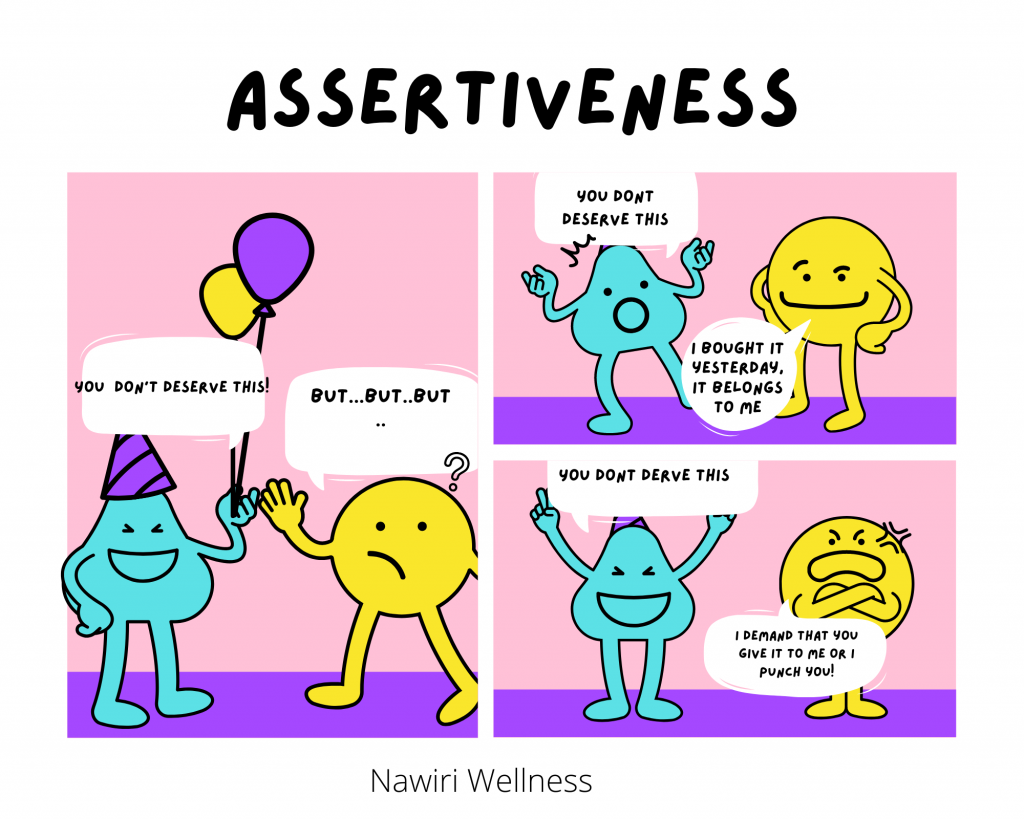There are many injustices and unfair treatment in the world we live in. Those who do not know how to speak up for themselves may find themselves being side lined. Those who are not assertive may be taken for granted.
What is assertiveness? “Assertiveness is a healthy way of communicating. It’s the ability to speak up for ourselves in a way that is honest and respectful. Every day, we’re in situations where being assertive can help us —like approaching a teacher with a question, or doing well on a job or college interview.”- Kidshealth
When a person is assertive, they are not afraid to give their opinion, but they do so in a way that is not mean. It is important to teach one’s child the art of assertive communication. This will then help build their self-confidence.
Some people even think they do not deserve things, that on the contrary, they have no rights to have them. Because they are not assertive, they do not voice their wants and they continuously settle for less.
When kids know how to be assertive they will:
1. Learn how to say “NO”. One’s children will know how to communicate clearly, and stand their ground. They will not easily follow masses or trends or easily be influenced by peer pressure.
2. Know how and when to say what they feel and need. Children need to learn the “I” messages that can be used to express how they feel during different situations. Eg “I feel angry when you yell at me to make my bed”. With this kind of communication, the parent will know how to handle situations that may otherwise cause strife between them and their child.
3. Have high confidence in themselves.
There are 4 broad ways of communication: Passive, aggressive and assertive communication.
● Passive communication is where an individual avoids expressing their feelings and voicing their rights, beliefs, expectations and needs. This type of communication can lead to situations of being taken advantage of.
● Aggressive communication is where an individual expresses their feelings, advocates for their rights and needs, but oppresses others in the process!!. These individuals tend to be verbally and also possibly physically abusive and they try to dominate others.
● Passive aggressive communication is where an individual fails to communicate their preferences, views and expectations in relation to an issue. They lead the other party to believe that they will do what has been discussed and agreed upon. These individuals then go ahead and fail to do that which they had indicated they would do. They usually have no intention of doing the thing they agreed to from the first instance but deliberately lead the other on to believing that they would attend to the matter at hand.
● Assertive communication is where an individual expresses their point of view in a clear direct way that does not do harm to others.

These communication styles do not occur naturally, they are learned. As caregivers, we have a responsiblity of teaching the children under our care the skill of being assertive and how to assess when the other forms of communication may be necessary.
This set of skills do come in handy as they go through life as children, adolescents and way into adulthood when they are faced with more complex situations.

Enroll your child to the Nawiri Champs Empowerment Workshop to learn how to promote their assertiveness.
